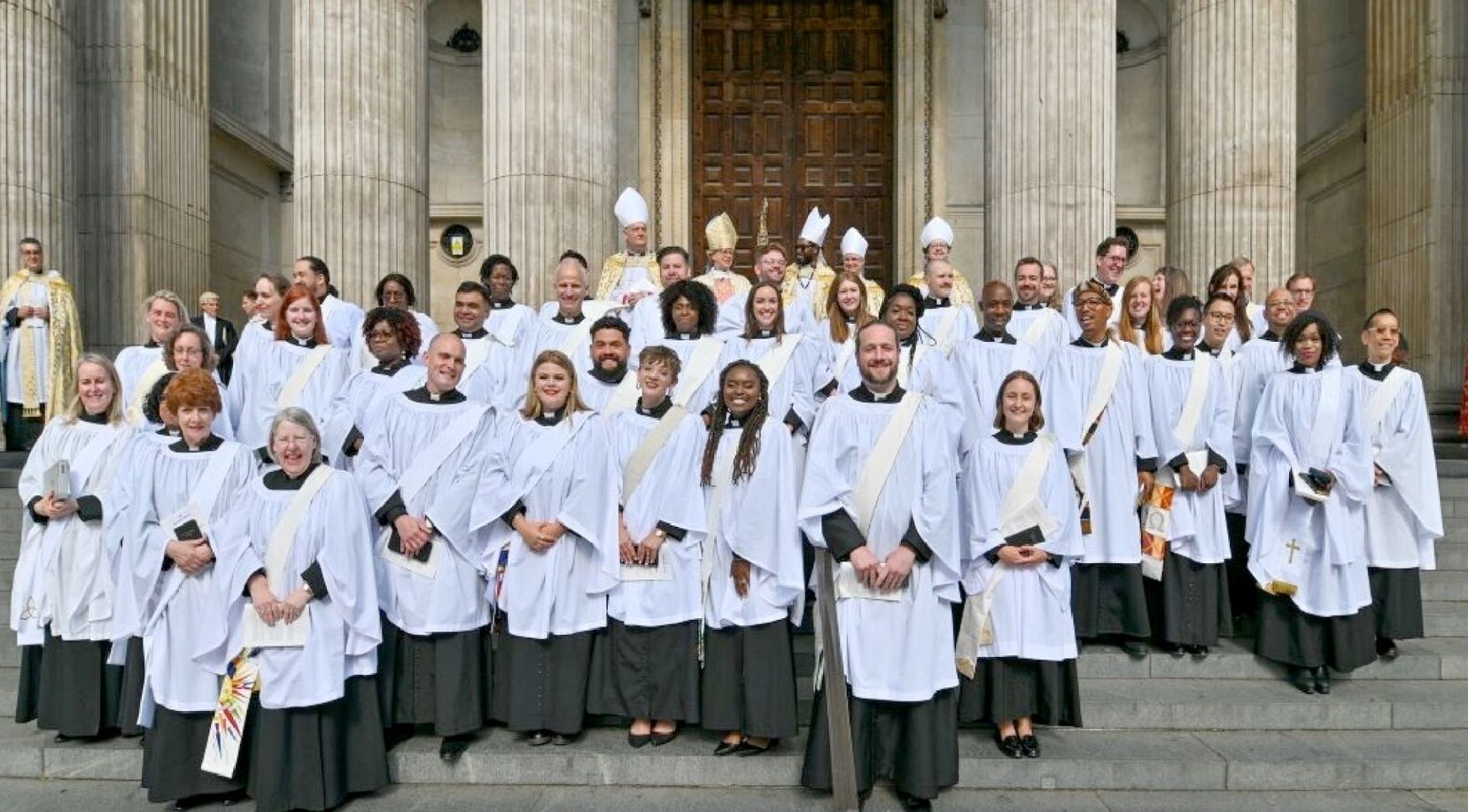(ZENIT News / Rome, 11.23.2025).- For more than thirty years, a steady, largely unnoticed current has been flowing beneath the surface of British Christianity. It has not made the headlines that doctrinal disputes once did, nor has it provoked the drama that ecclesial controversies often attract. Yet its cumulative effect is significant: since 1992, former Anglican clergy have represented a third of all those who entered Catholic priestly ministry in England and Wales.
A new study, produced by the St Barnabas Society in collaboration with researchers at the Benedict XVI Centre at St Mary’s University in Twickenham, brings the phenomenon into clearer focus. Far from a historical footnote, the arrival of these clergy has become a recurring and influential pattern in the life of the Catholic Church in Britain.
The story begins in 1992, when the Church of England’s General Synod approved the ordination of women. That vote did not instantly trigger a mass migration, but it did open a long, complex chapter in which questions of identity, tradition and conscience began to weigh heavily on many Anglican priests. The report traces how their numbers surged in key moments: more than 150 entered the Catholic Church in 1994, and another wave followed in 2011 with the creation of the Personal Ordinariate of Our Lady of Walsingham, which allowed former Anglicans to maintain familiar liturgical and pastoral elements within Catholic unity.
Despite those spikes, the researchers note that in an average year the movement is measured not in crowds—typically up to eleven Anglican clergy received, and roughly the same number ordained. Still, the long-term arithmetic is striking. The authors estimate that around 700 Anglican clergy, religious, and even bishops from England, Wales, and Scotland have entered the Catholic Church since 1992. Sixteen former Anglican bishops are among them, with the most recent, Richard Pain, received as late as 2023.
Yet the numbers tell only part of the story. Interviews conducted for the study reveal a landscape marked by discernment, inner tension, and personal cost. Many described a period of “ecclesial unease,” a sense of standing at an intellectual and spiritual crossroads long before any outward step was taken. For married clergy, the anxieties often extended into the practical realm: leaving the only profession they were trained for, with no guarantee of future employment and the real possibility of ruptured friendships, strained marriages, or the loss of community networks built over a lifetime.
Formation posed its own challenges. Several former Anglicans felt that their years of theological study and pastoral service were not always fully acknowledged, and that expectations across dioceses varied widely. Married candidates, moreover, faced the additional scrutiny of the Dicastery for the Doctrine of the Faith, since their ordination required Rome’s explicit approval. The Ordinariate, by contrast, offered what many described as a more predictable and consistent path.
Cardinal Vincent Nichols, who heads the St Barnabas Society, writes in the report’s foreword that these journeys should not be misunderstood as an abandonment of Anglican heritage. Instead, he frames them as a movement toward “full visible communion” within Catholicism—a continuation rather than a repudiation of the spiritual traditions that shaped them.
Paul Martin, the Society’s director and himself a former Anglican priest received in 1994, goes further: without the Society’s financial and pastoral assistance, he argues, many would not have been able to take the step at all. The sacrifices required were too great, and the practical risks too steep, for clergy with families to navigate alone.
The study also challenges a number of widespread assumptions. Stephen Bullivant, one of its authors, notes the persistent caricature that all former Anglican clergy crossing the threshold are high-church traditionalists motivated by hostility to women’s ordination. The data and interviews, he says, paint a far more diverse picture. Many spoke openly and appreciatively of their Anglican formation, and even those who experienced deep conflict did not reduce their decisions to a single issue.
Bullivant also observes that ecumenical sensitivities have long discouraged public discussion of these trends. That reluctance, however well-intentioned, has had consequences: some families felt that their difficult decisions were overlooked, or that the personal cost of such transitions was quietly absorbed into institutional caution. Even references to Newman’s canonisation, some said, seemed at times to underplay the disruption and sacrifice that conversion can entail.
The report closes by acknowledging a paradox. While the Catholic Church in England and Wales receives only a small number of new priestly candidates each year—sixteen began formation in 2023—Anglicanism continues to ordain hundreds annually. The two traditions hold fundamentally different views of priesthood, and Catholic ministry, as Bullivant points out, demands a way of life marked by radical availability: priests go where their bishop sends them, celibacy remains normative, and the margins for personal decision are narrow.
But the movement is not one-directional. Some former Anglicans who became Catholic priests later re-entered Anglican ministry. Others left priestly life entirely, often connected in some way to marriage or family circumstances. The report treats these reverse journeys not as anomalies but as reminders of the human complexity behind ecclesial statistics.
What emerges, ultimately, is a landscape shaped not by dramatic ruptures but by quiet, steady decisions made over many years—decisions at once theological, personal and deeply costly. Three decades on, these former Anglicans have become a lasting, if understated, presence within British Catholicism. And as long as questions of identity, authority and conscience continue to shape both traditions, the slow current that carries clergy across the Tiber seems unlikely to disappear.
Thank you for reading our content. If you would like to receive ZENIT’s daily e-mail news, you can subscribe for free through this link.

